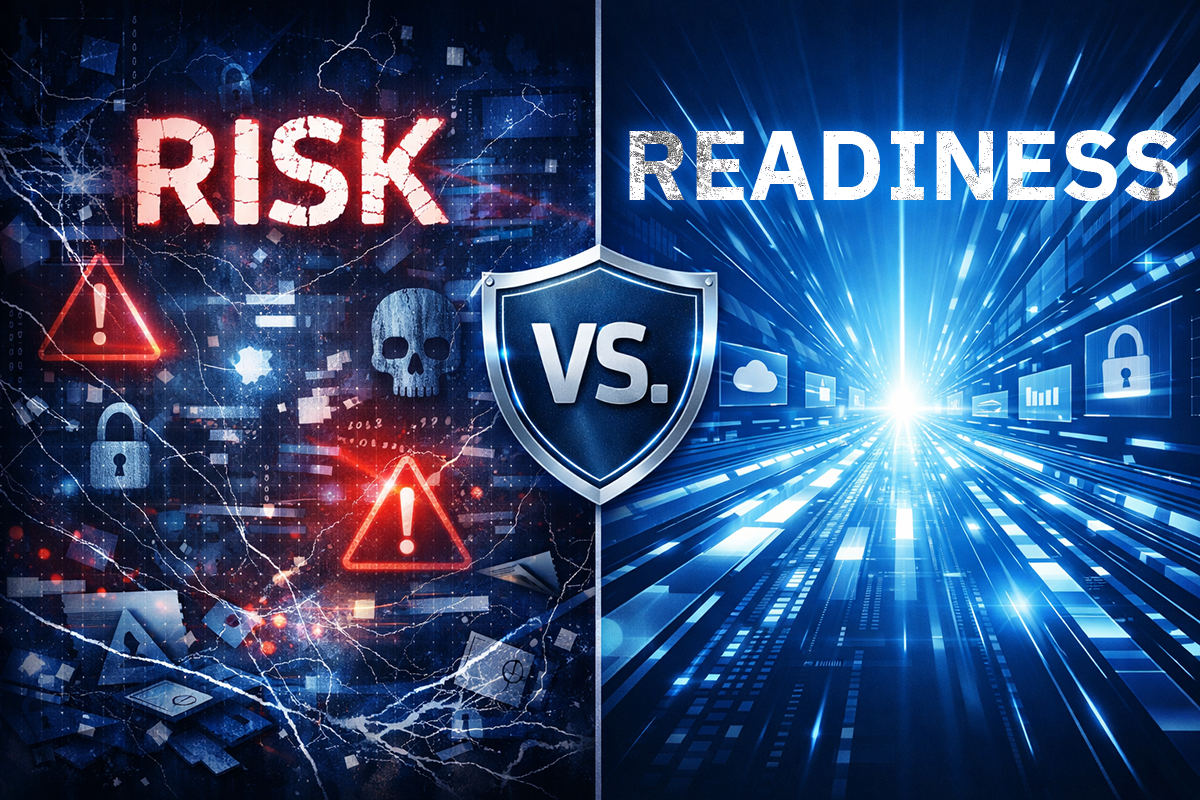The Importance of People in Cyber Risk Management: Incident Response Tabletop Exercises (TTX)

Imagine waking up to find your organization’s data plastered across the dark web. The fallout is immediate — a tarnished reputation, customer trust that’s shattered, and financial losses that quickly mount. This isn’t a distant nightmare; it’s the reality for many companies that have suffered cyberattacks. Despite having the latest technology, many organizations falter because they overlook the most crucial element in cybersecurity: their people.
Roles and Responsibilities in Incident Response
People have often been considered the weakest link in cybersecurity, yet they’re also the first line of defense. According to the 2023 Verizon Data Breach Investigations Report report, a human element is responsible for over 82% of cybersecurity incidents. Sophisticated tools and AI-driven technologies can detect anomalies and potential threats, while managed detection and response (MDR) teams can swiftly mitigate risks. However, these technological advancements are only as effective as the people using them. This is where incident response tabletop exercises (TTX) come into play.
Real-World Incidents: Lessons Learned
Consider the following high-profile incidents:
- Notable Credit Company: Account information belonging to millions was exposed. A well-practiced TTX could have prepared this company to respond more swiftly, potentially mitigating the breach’s impact.
- Major Retailer: Millions of credit and debit card accounts were compromised. A TTX might have exposed the significance of specific systems and improved their response strategy.
- Global Shipping Company: Malware disrupted operations globally, costing millions. A TTX could have streamlined incident response, reducing downtime and financial loss.
The Value of Incident Response Tabletop Exercises (TTX)
TTX provides a controlled environment to practice response strategies, understand roles, and identify gaps in the plan. The benefits include:
- Enhanced Preparedness: TTX helps organizations test their incident response plans, ensuring that everyone knows what to do during an actual incident. This preparedness can significantly reduce response times and mitigate the impact of a cyberattack.
- Improved Communication: Effective incident response requires seamless communication between various departments. TTX fosters collaboration and communication, helping to break down silos and ensuring that information flows smoothly during a crisis.
- Identifying Gaps: TTX can reveal weaknesses in existing plans and processes. By identifying these gaps in a controlled environment, organizations can address them proactively, rather than during an actual incident.
- Role Clarity: Every stakeholder within the Cyber Incident Response Team and wider, must understand their specific responsibilities during an incident. TTX clarifies these roles, ensuring that there is no confusion or overlap, which can cause delays in response.
- Building Confidence: Regularly conducting TTX builds confidence among staff. Knowing that they are well-prepared can reduce anxiety and improve their ability to perform under pressure.
- Regulatory Compliance: Many regulations and standards require organizations to regularly test their incident response plans. TTX can help ensure compliance with these requirements.
Steps to Conduct an Effective TTX
To ensure the TTX is impactful and provides true insight and value for an organizations, the TTX should follow these essential steps:
1. Define Objectives: Clearly outline what you hope to achieve with the exercise. This could include testing specific response procedures, improving communication, or identifying weaknesses.
2. Select Participants: Choose key stakeholders from various departments, including IT, HR, legal, communications, and executive leadership. Ensure that all relevant parties are involved.
3. Develop a Scenario: Create a realistic and relevant scenario that challenges your incident response plan. The scenario should be detailed enough to test all aspects of the response process end to end.]
4. Facilitate the Exercise: A skilled facilitator should guide the exercise, ensuring that it stays on track and that all objectives are met. The facilitator should also prompt participants to think critically and address any emerging issues. They should also throw in curve balls or injects to see how the team respond and ensure they understand their role and responsibility.
5. Debrief: After the exercise, conduct a thorough debriefing session. Discuss what went well, what could be improved, and any gaps that were identified. This feedback is crucial for refining your incident response plan.
6. Document Findings: Document the outcomes of the TTX, including any identified gaps and the actions needed to address them. This documentation can be invaluable for future reference and continuous improvement.
7. Implement Improvements: Based on the findings, make necessary adjustments to your incident response plan. Ensure that all changes are communicated to the relevant stakeholders and incorporated into future training.
Cultivating a Security-Aware Culture
People have been identified as the number one risk in cybersecurity over the past few years. Ensuring key stakeholders understand how to respond in the event of an incident is important but organizations should also consider a security-aware culture across the company. This ensures that employees at all levels understand the importance of cybersecurity and their role in protecting the organization’s assets. According to Bitdefender’s 2023 Cybersecurity Threat Landscape Report, fostering a security-aware culture is crucial in reducing human errors and improving overall security posture.
Here are key aspects to consider when creating a security-aware culture:
- Regular Training: Continuous education and training programs ensure that employees are up-to-date with the latest cybersecurity practices and threats.
- Awareness Campaigns: Regular awareness campaigns can keep cybersecurity top-of-mind for employees, reminding them of best practices and emerging threats.
- Leadership Involvement: Leadership must set the tone for a security-aware culture. Their commitment to cybersecurity influences the entire organization.
- Encourage Reporting: Create an environment where employees feel comfortable reporting suspicious activities without fear of retribution. Early detection is often the key to preventing larger incidents.
Summary
While technology and processes are critical components of cyber risk management, the role of people cannot be overstated. Incident response tabletop exercises (TTX) are invaluable for preparing organizations to effectively handle cyber incidents. They ensure that key stakeholders are aware of their roles and responsibilities, improve communication, and identify gaps in existing plans. By regularly conducting TTX and fostering a security-aware culture, organizations can significantly enhance their cyber resilience.
People have consistently been the number one risk in cybersecurity, emphasizing the need for a robust, security-aware culture. Regular training, leadership involvement, and a supportive environment for reporting are essential. As cyber threats evolve, so must our approach to managing them—balancing advanced technology with the irreplaceable human element.
tags
Author
Nicholas is an accomplished professional, currently serving as the Director of Cyber Operations at Bitdefender. In his current capacity, Nicholas is responsible for 3 services; Offensive Security, Security Advisory, and Delivery Management. With an extensive cybersecurity background gained across various globally recognized organizations, he offers a wealth of cyber security experience. His journey through diverse cybersecurity landscapes has equipped him with a nuanced understanding of the field, making him a trusted leader in shaping robust and effective cybersecurity strategies.
View all postsRight now Top posts
FOLLOW US ON SOCIAL MEDIA
SUBSCRIBE TO OUR NEWSLETTER
Don’t miss out on exclusive content and exciting announcements!
You might also like
Bookmarks










